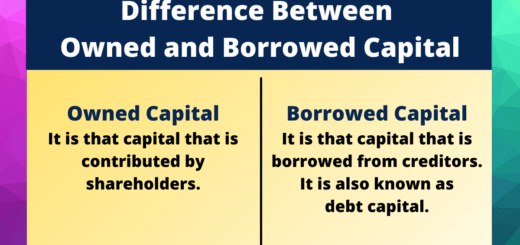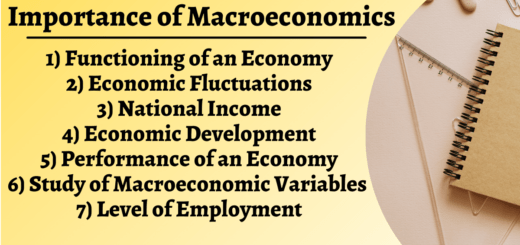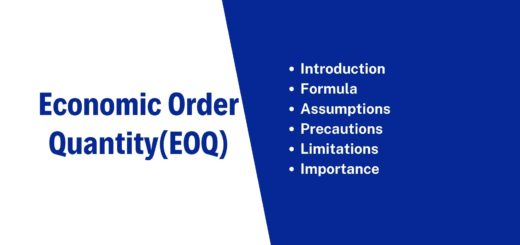What is Demand Schedule? | Individual and Market Demand Curve
Table of Contents
What is Demand Schedule?
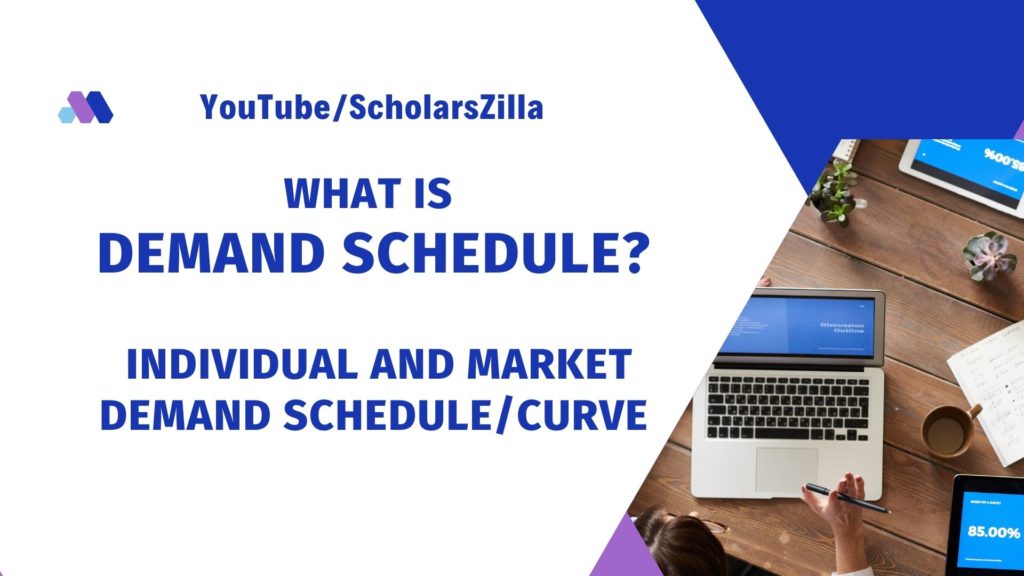
Meaning of Demand
In ordinary language, demand means a desire. Desire means an urge to have something.
In Economics, demand means a desire which is backed by a willingness and ability to pay.
For example, if a person has the desire to purchase a television set but does not have adequate purchasing power then it will be simply a desire and not a demand.
Thus, demand is an effective desire. All desires are not demand.
In short,
Demand = Desire + Willingness to Purchase + Ability to Pay.
- Microeconomic Definition | Historical Review of Microeconomics
- Scope Or Nature of Microeconomics
- Features of Microeconomics
- Importance of Microeconomics
Definition of Demand
According to Benham, “the demand for anything at a given price is the amount of it, which will be bought per unit of time at that price.”
Thus, following are the features of demand :
1) Demand is a relative concept.
2) Demand is essentially expressed with reference to time and price.
What is Demand Schedule?
Demand Schedule
The demand schedule is a tabular representation of the functional relationship between price and quantity demanded for a particular commodity.
A demand schedule may be either an individual demand schedule or a market demand schedule.
Individual Demand Schedule
Individual demand is the quantity of a commodity demanded by a consumer at a given price during a given period of time.
An individual demand schedule is a tabular representation showing different quantities of commodities that an individual consumer is prepared to buy at various prices over a given period of time.
This can be explained with the help of the following individual demand schedule.
| Price of commodity ‘Y’ ( Rs ) | Quantity demanded of commodity ‘Y’ (in kgs) |
| 20 | 2 |
| 16 | 4 |
| 12 | 6 |
| 08 | 8 |
| 04 | 10 |
The above table shows different quantities of commodity ‘Y’ purchased by an individual consumer at various prices. It can be observed that less quantity of commodity is demanded at rising prices and more quantity of commodity is demanded at falling prices. It indicates an inverse relationship between price and quantity
demanded.
Individual Demand Curve
The individual demand curve is a graphical representation of the individual demand schedule.
The below fig. represents an individual demand curve

In the above fig., X-axis represents quantity demanded and Y-axis represents the price of the commodity. The demand curve DD slopes downward from left to right, indicating an inverse relationship between price and quantity demanded.
Market Demand Schedule
Market demand is the total demand for a commodity from all the consumers at a given price during a given period of time. Market demand schedule is a tabular representation showing different quantities of commodity which all consumers are prepared to buy at various prices over a given period of time.
It is obtained by a horizontal summation of the demand of all consumers at various prices. It also indicates an inverse relationship between price and quantity demanded.
This can be explained with the help of following market demand schedule.
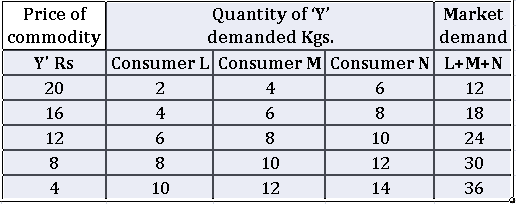
The above table shows different quantities of commodity Y purchased by different consumers (L, M, N) at various prices. It can be observed that less quantity of commodity is demanded at rising prices and more quantity of commodity is demanded at falling prices. Thus, there is an inverse relationship between price and quantity demanded.
Market Demand Curve
Graphically, the market demand curve is a horizontal summation of individual demand curves. It is based on the market demand schedule.
The below fig. represents the market demand curve

In the figure, X-axis represents market demand and Y-axis represents the price of the commodity. The market demand curve ‘DD’ slopes downward from left to right, indicating an inverse relationship between price and market demand.
